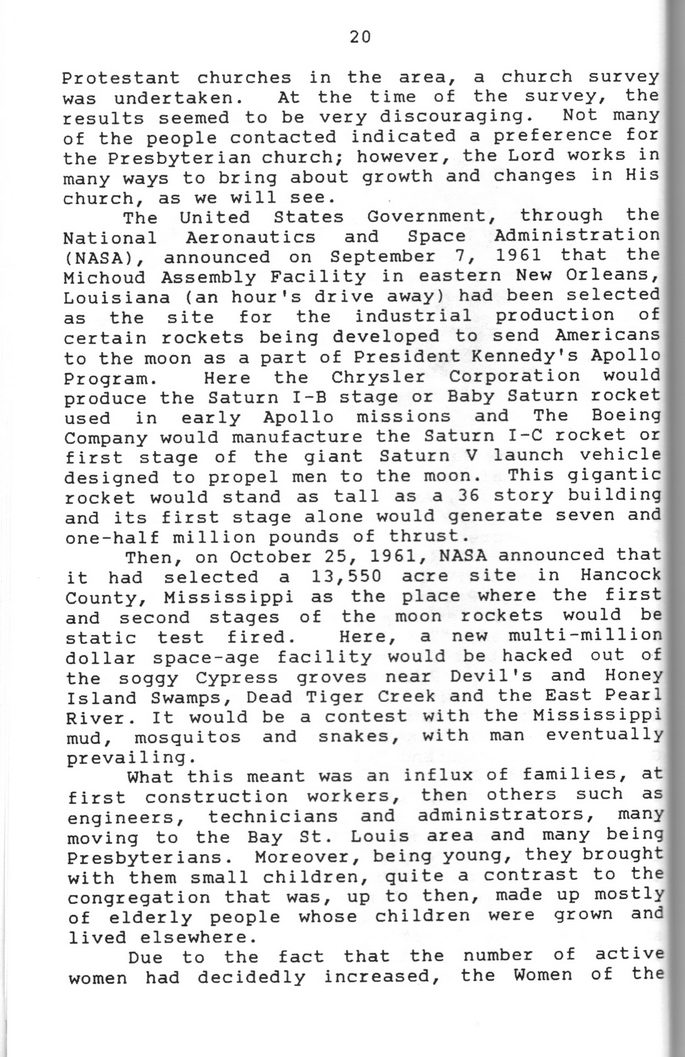This text was obtained via automated optical character recognition.
It has not been edited and may therefore contain several errors.
20 Protestant churches in the area, a church survey was undertaken. At the time of the survey, the results seemed to be very discouraging. Not many of the people contacted indicated a preference for the Presbyterian church; however, the Lord works in many ways to bring about growth and changes in His church, as we will see. The United States Government, through the National Aeronautics and Space Administration (NASA), announced on September 7, 1961 that the Michoud Assembly Facility in eastern New Orleans, Louisiana (an hour's drive away) had been selected as the site for the industrial production of certain rockets being developed to send Americans to the moon as a part of President Kennedy's Apollo Program. Here the Chrysler Corporation would produce the Saturn I-B stage or Baby Saturn rocket used in early Apollo missions and The Boeing Company would manufacture the Saturn I-C rocket or first stage of the giant Saturn V launch vehicle designed to propel men to the moon. This gigantic rocket would stand as tall as a 36 story building and its first stage alone would generate seven and one-half million pounds of thrust. Then, on October 25, 1961, NASA announced that it had selected a 13, 550 acre site in Hancock County, Mississippi as the place where the first and second stages of the moon rockets would be static test fired. Here, a new multi-million dollar space-age facility would be hacked out of the soggy Cypress groves near Devil's and Honey Island Swamps, Dead Tiger Creek and the East Pearl River. It would be a contest with the Mississippi mud, mosquitos and snakes, with man eventually prevai1ing. What this meant was an influx of families, at first construction workers, then others such as engineers, technicians and administrators, many moving to the Bay St. Louis area and many being Presbyterians. Moreover, being young, they brought with them small children, quite a contrast to the congregation that was, up to then, made up mostly of elderly people whose children were grown and lived elsewhere. Due to the fact that the number of active women had decidedly increased, the Women of the

First Presbyterian Church History-of-the-First-Presbyterian-Church-23